Do you have a question about the Pioneer VSX-1024 and is the answer not in the manual?
Register your product online for support and warranty information.
Critical warnings regarding electric shock and opening the unit.
Guidelines for proper unit placement and operating environment.
Important information on product development, water hazards, and small parts.
Comprehensive list of safety instructions for safe operation.
Details on FCC compliance, Proposition 65, and power cord safety.
Description of audio capabilities and technologies.
Details on video pass-through and connection options.
Overview of network connectivity and wireless features.
Explains High Resolution Audio, Gapless Playback, Dolby, and Sound Retriever.
Covers remote app, ZONE 2, and energy saving design.
Verify included items and proper receiver placement.
Step-by-step guide for connecting components and initial settings.
Detailed layout and function of front panel buttons and inputs.
Explanation of various status lights and indicators.
Comprehensive guide to remote control buttons and operations.
Instructions for battery replacement and input selection.
Information on optimal distance and angle for remote operation.
Guides for 5.1, 6.1, 7.1 channel and Bi-amping setups.
Details on connecting speakers for multi-room audio.
Tips for improving audio quality through speaker positioning.
Step-by-step guide for bare wire and spade terminal connections.
Specific instructions for connecting advanced surround speakers.
How to switch between different speaker outputs.
Best practices for connecting HDMI and other cables.
Explanation of HDMI features and capabilities.
Guides for analog audio, video, and digital audio connections.
Information on how video signals are output.
Connecting various HDMI-compatible sources to the receiver.
Details on 4K resolution support for specific HDMI inputs.
Instructions for TVs lacking HDMI input, using analog connections.
Connecting and using a Bluetooth adapter for wireless music.
Guides for wired (LAN) and wireless network connections.
How to connect AM and FM antennas for optimal signal.
Tips for improving AM and FM reception with external antennas.
Connecting an external IR receiver for remote control.
Instructions for connecting and playing music from iPod/iPhone.
How to connect and play files from USB devices.
Connecting MHL devices for video, audio, and charging.
Connecting Roku for video streaming services.
Connecting devices to the front panel HDMI port.
Properly connecting the AC power cord and HDMI initialization.
Step-by-step guide for automatic speaker and room calibration.
Verifying MCACC results and resolving common issues.
Basic steps for playing music from connected devices.
How to choose the correct audio input for each source.
Supported digital audio formats for various connections.
Controlling iPod/iPhone playback via the receiver.
Browsing and selecting music files stored on an iPod.
Instructions for playing audio files from connected USB storage.
Details on playing MP3, WAV, WMA, FLAC, AIFF, and Apple Lossless files.
How to play photo files and view slideshows from USB.
List of supported formats and information on gapless playback.
Playing video and audio from MHL-compatible devices.
Connecting and using Roku for video streaming.
Using the Bluetooth adapter for wireless music enjoyment.
Step-by-step guide for pairing Bluetooth devices with the adapter.
How to play music from a Bluetooth device through the system.
Instructions for automatic and manual tuning, and improving FM sound.
How to store favorite stations and assign custom names.
Choosing appropriate modes for different audio sources and environments.
Overview of automatic source detection and surround sound options.
Explanation of various surround sound modes and their sources.
Exploring various surround effects for movies, games, and music.
Utilizing Sound Retriever, Acoustic Calibration, and Surround Back Processing.
Customizing audio parameters like width, dimension, and up mixing.
Overview of network capabilities, DLNA, DHCP, and authorization.
Streaming music from PCs, Pandora, Spotify, and listening to Internet radio.
Streaming audio from Apple devices using AirPlay.
Enjoying music content from compatible HTC smartphones.
Using the remote for network browsing and playback.
Adding stations not listed on the vTuner service.
Configuring and listening to personalized Pandora stations.
Connecting to Spotify Premium for music streaming.
Accessing and playing music stored on PCs or media servers.
Saving and deleting favorite songs and radio stations.
Accessing and navigating the network setup options.
Manual setup for IP address, subnet mask, gateway, and proxy.
Setting friendly name, parental lock, and language preferences.
Updating the receiver's firmware via USB or network.
Using Safari for network setup, friendly name, and firmware updates.
Detailed steps for updating firmware using a USB memory device.
Resetting network settings and checking system status.
Explanation of network playback methods and content limitations.
Information on playback issues and third-party service terms.
Definitions of technical terms used in network features.
Guide to using Windows Media Player for network playback.
List of audio file formats supported for network playback.
Technical specifications for supported audio file formats.
How to access and navigate the receiver's main menu system.
Detailed steps for manually configuring speaker settings.
Configuring speaker size and setting the subwoofer crossover frequency.
Balancing audio levels for each speaker channel.
Assigning audio and video inputs to specific terminals.
Configuring analog audio and component video inputs.
Managing power saving features and network standby mode.
Settings for MHL auto-switching and Roku standby power.
Configuring speaker system and display overlay settings.
Configuring and operating independent audio zones.
Enabling and configuring synchronized operation via HDMI.
Understanding synchronized playback and potential issues.
Resolving problems with power, HDMI indicators, and overheating.
Resolving issues with remote control, display, iPod, and Bluetooth.
Diagnosing problems with network access and audio playback.
Addressing issues with Windows Media Player, radio, Spotify, and Wi-Fi.
Resolving HDMI picture/sound issues and compatibility concerns.
Details on MHL, HTC Connect, iPod/iPhone, and audio codecs.
Understanding messages related to network operations.
Restoring factory defaults and maintaining the unit's cleanliness.
Detailed technical data for the receiver model.
Guidelines for establishing and maintaining safe listening volumes.
Register your product online for support and warranty information.
Critical warnings regarding electric shock and opening the unit.
Guidelines for proper unit placement and operating environment.
Important information on product development, water hazards, and small parts.
Comprehensive list of safety instructions for safe operation.
Details on FCC compliance, Proposition 65, and power cord safety.
Description of audio capabilities and technologies.
Details on video pass-through and connection options.
Overview of network connectivity and wireless features.
Explains High Resolution Audio, Gapless Playback, Dolby, and Sound Retriever.
Covers remote app, ZONE 2, and energy saving design.
Verify included items and proper receiver placement.
Step-by-step guide for connecting components and initial settings.
Detailed layout and function of front panel buttons and inputs.
Explanation of various status lights and indicators.
Comprehensive guide to remote control buttons and operations.
Instructions for battery replacement and input selection.
Information on optimal distance and angle for remote operation.
Guides for 5.1, 6.1, 7.1 channel and Bi-amping setups.
Details on connecting speakers for multi-room audio.
Tips for improving audio quality through speaker positioning.
Step-by-step guide for bare wire and spade terminal connections.
Specific instructions for connecting advanced surround speakers.
How to switch between different speaker outputs.
Best practices for connecting HDMI and other cables.
Explanation of HDMI features and capabilities.
Guides for analog audio, video, and digital audio connections.
Information on how video signals are output.
Connecting various HDMI-compatible sources to the receiver.
Details on 4K resolution support for specific HDMI inputs.
Instructions for TVs lacking HDMI input, using analog connections.
Connecting and using a Bluetooth adapter for wireless music.
Guides for wired (LAN) and wireless network connections.
How to connect AM and FM antennas for optimal signal.
Tips for improving AM and FM reception with external antennas.
Connecting an external IR receiver for remote control.
Instructions for connecting and playing music from iPod/iPhone.
How to connect and play files from USB devices.
Connecting MHL devices for video, audio, and charging.
Connecting Roku for video streaming services.
Connecting devices to the front panel HDMI port.
Properly connecting the AC power cord and HDMI initialization.
Step-by-step guide for automatic speaker and room calibration.
Verifying MCACC results and resolving common issues.
Basic steps for playing music from connected devices.
How to choose the correct audio input for each source.
Supported digital audio formats for various connections.
Controlling iPod/iPhone playback via the receiver.
Browsing and selecting music files stored on an iPod.
Instructions for playing audio files from connected USB storage.
Details on playing MP3, WAV, WMA, FLAC, AIFF, and Apple Lossless files.
How to play photo files and view slideshows from USB.
List of supported formats and information on gapless playback.
Playing video and audio from MHL-compatible devices.
Connecting and using Roku for video streaming.
Using the Bluetooth adapter for wireless music enjoyment.
Step-by-step guide for pairing Bluetooth devices with the adapter.
How to play music from a Bluetooth device through the system.
Instructions for automatic and manual tuning, and improving FM sound.
How to store favorite stations and assign custom names.
Choosing appropriate modes for different audio sources and environments.
Overview of automatic source detection and surround sound options.
Explanation of various surround sound modes and their sources.
Exploring various surround effects for movies, games, and music.
Utilizing Sound Retriever, Acoustic Calibration, and Surround Back Processing.
Customizing audio parameters like width, dimension, and up mixing.
Overview of network capabilities, DLNA, DHCP, and authorization.
Streaming music from PCs, Pandora, Spotify, and listening to Internet radio.
Streaming audio from Apple devices using AirPlay.
Enjoying music content from compatible HTC smartphones.
Using the remote for network browsing and playback.
Adding stations not listed on the vTuner service.
Configuring and listening to personalized Pandora stations.
Connecting to Spotify Premium for music streaming.
Accessing and playing music stored on PCs or media servers.
Saving and deleting favorite songs and radio stations.
Accessing and navigating the network setup options.
Manual setup for IP address, subnet mask, gateway, and proxy.
Setting friendly name, parental lock, and language preferences.
Updating the receiver's firmware via USB or network.
Using Safari for network setup, friendly name, and firmware updates.
Detailed steps for updating firmware using a USB memory device.
Resetting network settings and checking system status.
Explanation of network playback methods and content limitations.
Information on playback issues and third-party service terms.
Definitions of technical terms used in network features.
Guide to using Windows Media Player for network playback.
List of audio file formats supported for network playback.
Technical specifications for supported audio file formats.
How to access and navigate the receiver's main menu system.
Detailed steps for manually configuring speaker settings.
Configuring speaker size and setting the subwoofer crossover frequency.
Balancing audio levels for each speaker channel.
Assigning audio and video inputs to specific terminals.
Configuring analog audio and component video inputs.
Managing power saving features and network standby mode.
Settings for MHL auto-switching and Roku standby power.
Configuring speaker system and display overlay settings.
Configuring and operating independent audio zones.
Enabling and configuring synchronized operation via HDMI.
Understanding synchronized playback and potential issues.
Resolving problems with power, HDMI indicators, and overheating.
Resolving issues with remote control, display, iPod, and Bluetooth.
Diagnosing problems with network access and audio playback.
Addressing issues with Windows Media Player, radio, Spotify, and Wi-Fi.
Resolving HDMI picture/sound issues and compatibility concerns.
Details on MHL, HTC Connect, iPod/iPhone, and audio codecs.
Understanding messages related to network operations.
Restoring factory defaults and maintaining the unit's cleanliness.
Detailed technical data for the receiver model.
Guidelines for establishing and maintaining safe listening volumes.
| Audio Channels | 7.2 |
|---|---|
| Type | AV Receiver |
| Frequency Response | 10 Hz - 100 kHz |
| Total Harmonic Distortion | 0.08% |
| Network Capability | Yes |
| 4K Ultra HD pass-through | Yes |
| 3D pass-through | Yes |
| Audio Return Channel (ARC) | Yes |
| Dolby Atmos | Yes |
| DTS:X | Yes |
| Wi-Fi | Yes |
| Bluetooth | Yes |
| AirPlay | Yes |
| DLNA certified | Yes |
| Internet radio | Yes |
| USB | Yes |
| Phono input | Yes |
| Input Sensitivity/Impedance | 200 mV/47 kΩ |
| Signal-to-Noise Ratio | 100 dB |
| Speaker Impedance | 6 - 16 Ω |
| Outputs | HDMI |
| Tuner Frequency Range | FM: 87.5 - 108 MHz |
| Dimensions (W x H x D) | 435 x 168 |
| Power Output (8 ohms) | 80 W |
| Inputs | 6 HDMI, 1 Phono, 1 USB |

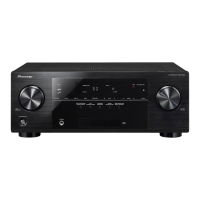
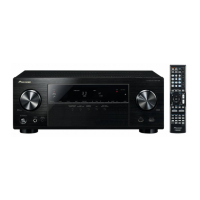
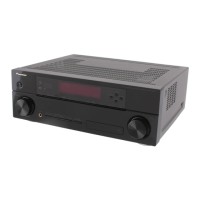

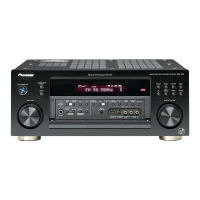

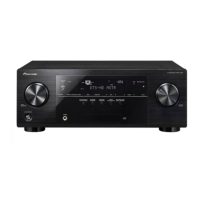
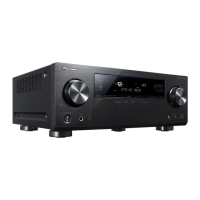

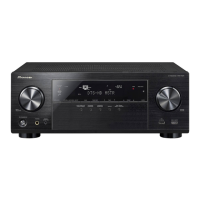

